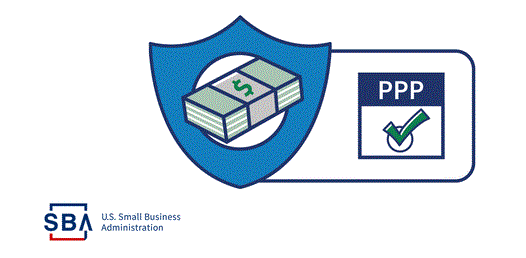Paycheck Protection Program
S.B.A Paycheck Protection Program application and re-applications have opened back up after the new bill was signed into law December 27th, 2020.

Economic Aid to Hard-Hit Small Businesses, Nonprofits and Venues Act
In response to the continued market disruption and economic impact of the COVID-19 pandemic, Congress passed the Economic Aid to Hard-Hit Small Businesses, Nonprofits and Venues Act, or the Act, on December 21, 2020 as a part of the Consolidated Appropriations Act, 2021, which provides additional funding to small businesses under the Paycheck Protection Program, or PPP, allows eligible borrowers to receive a second draw loan, simplifies loan forgiveness for loans under $150,000 and classifies forgiven PPP loans as tax deductible.
The Act provides for an additional $284 billion of funding for additional PPP loans through the Small Business Administration, or the SBA, and allows the hardest-hit small businesses to receive a second draw forgivable PPP loan. In order to be eligible for a second draw loan, the small business must (i) have received a PPP loan; (ii) used or will use the full amount of the existing PPP loan on or before the second draw loan is disbursed; (iii) have 300 or fewer employees; and (iv) sustained a 25% revenue loss in any full quarter of 2020, as compared to that same quarter in 2019.
The maximum second draw loan under the Act is the lesser of $2,000,000 or:
-
For non-seasonal employers, the average total monthly payment for payroll costs for either, as determined by the borrower, (i) the one year period before the date of the loan or (ii) calendar year 2019, multiplied by 2.5.
-
For seasonal employers, the average total monthly payment for payroll costs incurred or paid by the borrower for any 12-week period between February 15, 2019 and February 15, 2020 as chosen by the borrower, multiplied by 2.5.
-
For an entity that is assigned a North American Industry Classification System code beginning with 72 (accommodation and food services), the average total monthly payment for payroll costs for either, as determined by the borrower, (i) the one year period before the date of the loan or (ii) calendar year 2019, multiplied by 3.5.
Business are only allowed to receive one second draw PPP loan. Additionally, the Act clarifies that a business or organization that was not in operation on February 15, 2020 is ineligible for a loan, as is a person or business that receives a grant under the Shuttered Venue Operator Grants. Publicly-traded businesses and entities affiliated with the People’s Republic of China cannot qualify for a new PPP loan.
The loan can effectively turn into a grant. Most, and in some cases all, of the loan will be forgiven if a company uses the money to retain workers or hire back positions it had to cut. The S.B.A. has waived many of its usual requirements for these loans and will not require collateral for them.
How does the loan forgiveness work? Both full and partial forgiveness is available.
Businesses can have their loans forgiven in full if they maintain their full-time equivalent head count (based on a 40-hour workweek) and wages for eight weeks after the loan is disbursed, the Treasury Department said. The agency said that “not more than 25 percent” of the forgiven amount may be used for nonpayroll costs, like rent.
Forgiveness will be “reduced” for companies that trim their head count or cut workers’ wages by more than 25 percent, the Treasury said. Also, businesses can borrow and have forgiven only the first $100,000 in payroll for each employee.
Companies can borrow up to two months of their average monthly payroll costs for the past year, plus an additional 25 percent, up to $10 million. “Payroll costs” include salary, wages, tips, commissions, paid leave benefits, employer-paid health insurance premiums, and state and local payroll taxes.
The program generally uses Feb. 15, 2020, for calculating your pre-pandemic payroll (seasonal businesses can use a different date). As long as workers laid off after that date are brought back (or new workers are hired), the layoffs don’t affect a borrower’s eligibility for full forgiveness.



